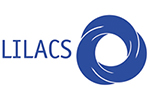ISSN Online: 2177-1235 | ISSN Print: 1983-5175
Showing of 1 until 1 from 1 result(s)
Search for : Leonardo Boscolo Bigarelli
Abnormalities in preoperative examinations of plastic surgery patients
ABSTRACT
Introduction: Preoperative tests (EPO) aim to detect abnormalities and give greater safety to the procedure. However, the request for these tests is still controversial, either because they do not bring about changes in conduct for the procedure or result in some harm to the patient. The objective is to assess the frequency of EPO requests and abnormalities in aesthetic plastic surgery patients, to verify what these abnormalities are, what preoperative management should be done based on the finding, and to associate the data obtained with the patient's profile and the planned surgery.
Method: Retrospective study evaluating medical records of aesthetic plastic surgery patients who underwent routine EPO in a plastic surgery hospital in 2019.
Results: 978 patients were studied, and 51% had some abnormality in EPO. 93.7% were women, with a mean age of 46.5 years. 12.3 exams were performed per patient, and abnormality was observed in 6.1% of EPO. The exams that had the most abnormalities were the lipidogram (23.8%) and the cardiac evaluation (14.1%). Hypothyroidism was the most common comorbidity (18.4% of patients); 70% of diabetics had a glycemic level above the recommended level. Only 3.4% of the patients suffered a change in preoperative management due to EPO abnormality, and in 57.9% of these cases, the surgery was postponed. Test alterations were more frequent in male patients (p<0.0001).
Conclusion: The performance of routine EPO showed a low frequency of altered exams (3.4%) and implied changes in the preoperative conduct of plastic surgery patients.
Keywords: Diagnostic tests, routine; Reconstructive surgical procedures; Preoperative care; Patient care management; Health care costs.
RESUMO
Introdução: Os exames pré-operatórios (EPO) visam detectar anormalidades e dar maior segurança ao procedimento. No entanto, a solicitação desses exames ainda é controversa, seja por não trazerem mudanças de conduta para o procedimento ou resultar em alguns malefícios para o paciente. O objetivo é avaliar a frequência de solicitações e de anormalidades dos EPO em pacientes de cirurgia plástica estética, verificar quais são estas anormalidades, qual conduta pré-operatória mediante o achado e associar os dados obtidos com o perfil do paciente e cirurgia prevista.
Método: Estudo retrospectivo avaliando prontuários de pacientes de cirurgia plástica estética que realizaram EPO de rotina em um hospital de cirurgia plástica durante o ano de 2019.
Resultados: Foram estudados 978 pacientes e 51% desses apresentaram alguma anormalidade nos EPO. 93,7% eram mulheres, com média de idade 46,5 anos. Foram realizados 12,3 exames por paciente e observada anormalidade em 6,1% dos EPO. Os exames que mais tiveram anormalidades foram o lipidograma (23,8%) e os da avaliação cardíaca (14,1%). Hipotireoidismo foi a comorbidade mais achada (18,4% dos pacientes); 70% dos diabéticos estavam com o nível glicêmico acima do recomendado. Apenas 3,4% dos pacientes sofreram alteração da conduta pré-operatória devido anormalidade dos EPO e em 57,9% desses casos houve adiamento da cirurgia. Alterações de exames foram mais frequentes em pacientes do sexo masculino (p<0,0001).
Conclusão: A realização de EPO de rotina mostrou baixa frequência de exames alterados (3,4%) e implicou em mudanças na conduta pré-operatória em pacientes de cirurgia plástica.
Palavras-chave: Testes diagnósticos de rotina; Procedimentos cirúrgicos reconstrutivos; Cuidados pré-operatórios; Administração dos cuidados ao paciente; Custos de cuidados de saúde
 All scientific articles published at www.rbcp.org.br are licensed under a Creative Commons license
All scientific articles published at www.rbcp.org.br are licensed under a Creative Commons license






